Stair Tread Grating Common Size and Applications
Stair tread grating covers stair steps, providing a stable and non-slip surface. It's designed with raised strips or perforated patterns to prevent slipping accidents, efficiently shedding water, dirt, and debris to keep steps safe and clean. Commonly found in industrial settings, outdoor stairways, and high-traffic areas, there are several reasons to opt for stair tread grating:
Why Use Stair Tread Grating?
- Safety: It offers a slip-resistant surface, reducing accident risks. The raised or perforated design ensures enhanced traction, even when wet or oily.
Durability: Typically crafted from robust materials like metal or fiberglass, it stands up to heavy foot traffic and varied conditions. Its design resists corrosion, making it apt for indoor and outdoor usage. - Drainage: The grating's open design efficiently drains water, dirt, and debris, preventing slippery accumulations.
- Versatility: Customizable to various staircases and architectural needs, it's available in diverse sizes, patterns, and materials.
- Cost-Effectiveness: Compared to alternatives such as solid step covers or anti-slip tapes, stair tread grating is a long-lasting, low-maintenance solution.
- Overall, stair tread grating ensures a safer, more durable staircase, especially in high-traffic or industrial areas.
Applications of Stair Tread Grating:
- Industrial Facilities: Often found in factories, warehouses, and plants, they offer slip resistance and prevent accidents from debris or slippery conditions.
- Commercial Buildings: Common in office complexes, malls, and hotels, they provide enhanced traction and drainage during peak times.
- Outdoor Staircases: Used in parks, stadiums, or public areas, these gratings withstand weather elements, ensuring pedestrian safety.
- Transportation Hubs: Locations like train stations, airports, and bus terminals use grating to cater to heavy foot traffic and prevent accidents.
- Residential Areas: Especially for outdoor steps or moisture-prone zones, they offer homeowners an extra safety layer.
What is Stair Tread Grating Common Size?
Cross Bar Size:
The size of the cross bars in grating typically varies, but some common sizes include:
6mm x 6mm
8mm x 8mm
Grating Panel (Width x Thickness):
The grating panel's width and thickness can greatly vary based on the application, but some common dimensions include:
Width: 200mm to 1000mm (or more, depending on the application)
Thickness: 20mm, 25mm, 30mm, 35mm, 40mm, 45mm, 50mm
Bearing Bar Pitch:
The bearing bar pitch (distance center-to-center between bearing bars) is often seen in these common specifications:
30mm (most common for steel grating)
40mm (less common but offers more air and light passage)
Grate Panel Angle/Width:
Referring to the bearing bar specification or profile. Common profiles include:
25 x 3mm
25 x 5mm
30 x 3mm
30 x 5mm
40 x 3mm
40 x 5mm
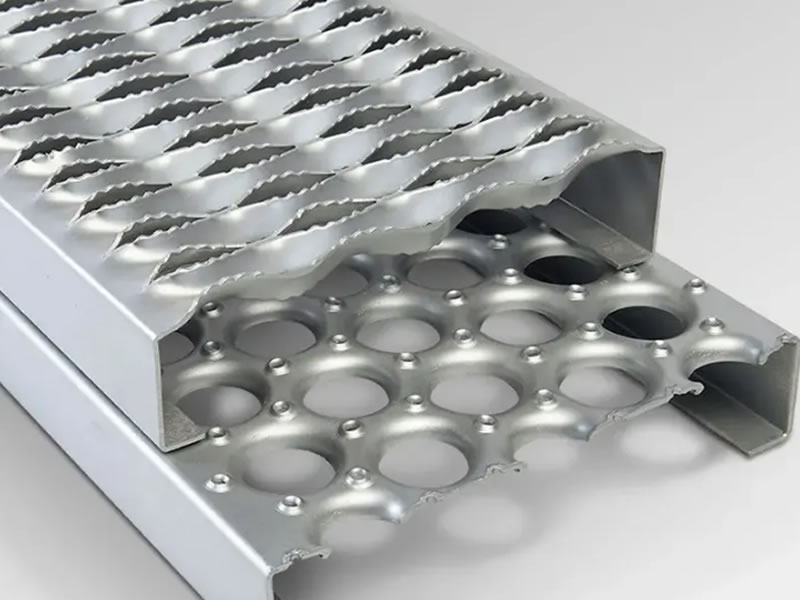
STG-1 Walkway Platform Metal
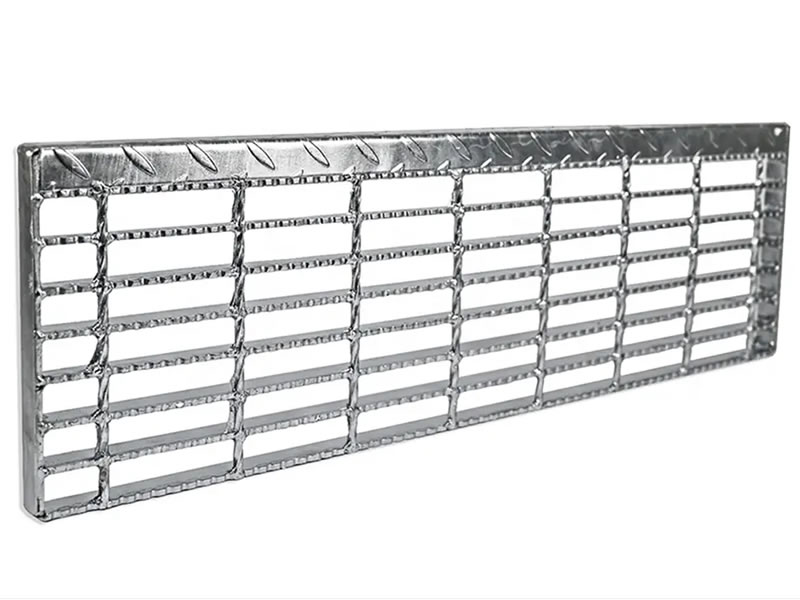
STG-2 Stair Tread Grating
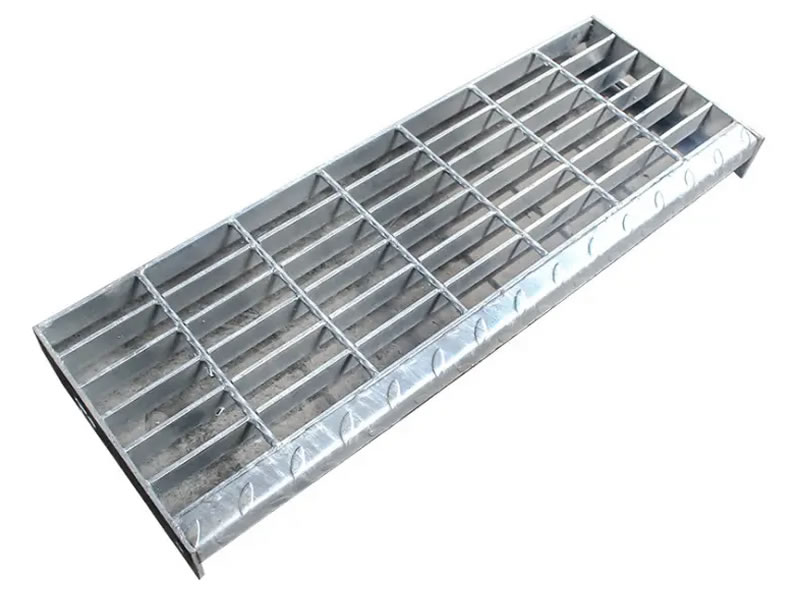
STG-3 Stair Tread Grating
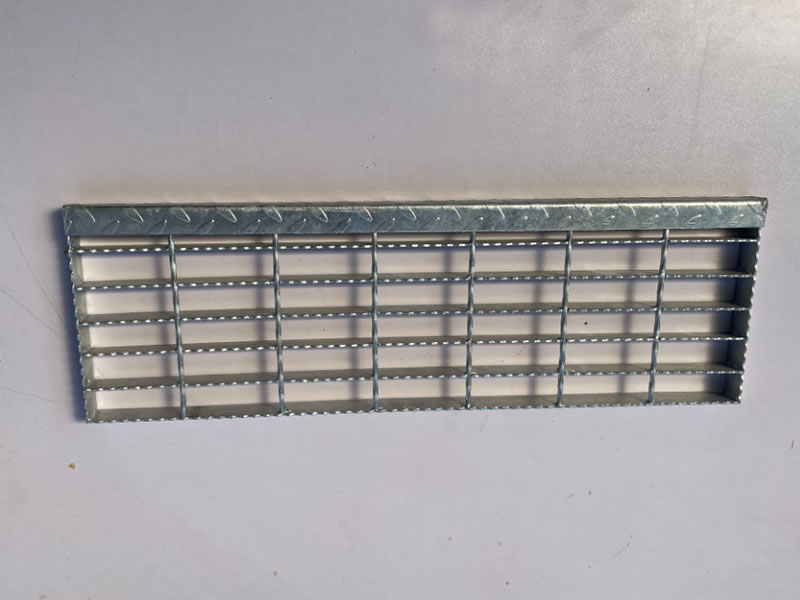
STG-4 Safety Grating Stair Tread Grating
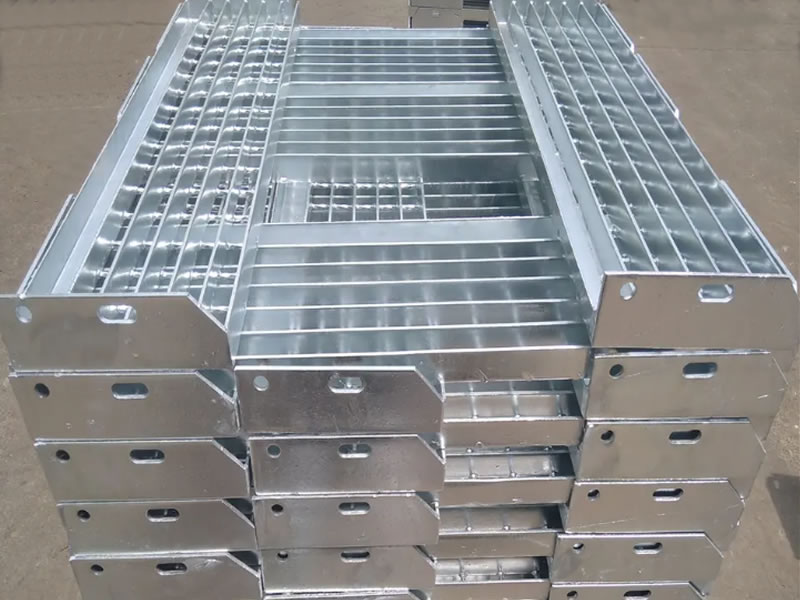
STG-5 Stair Tread Grating
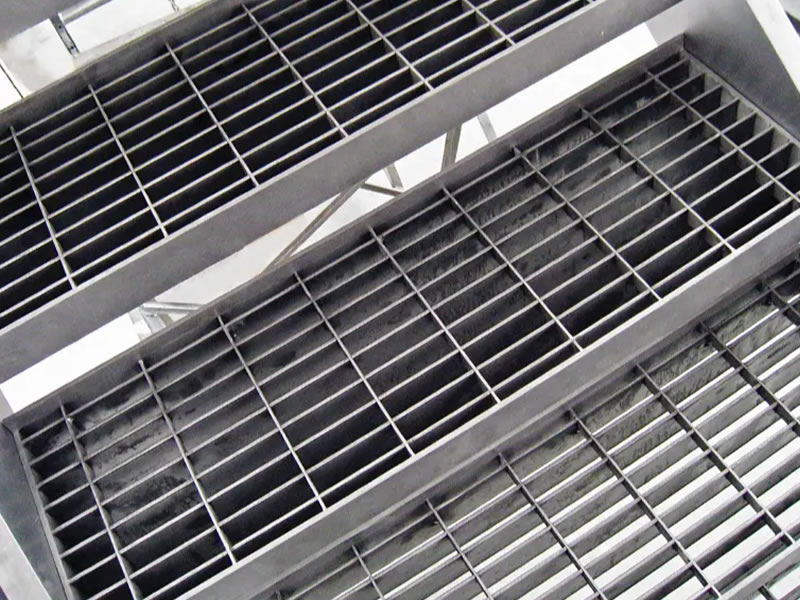
STG-6 Galvanized Metal Steps Steel Stair Tread

